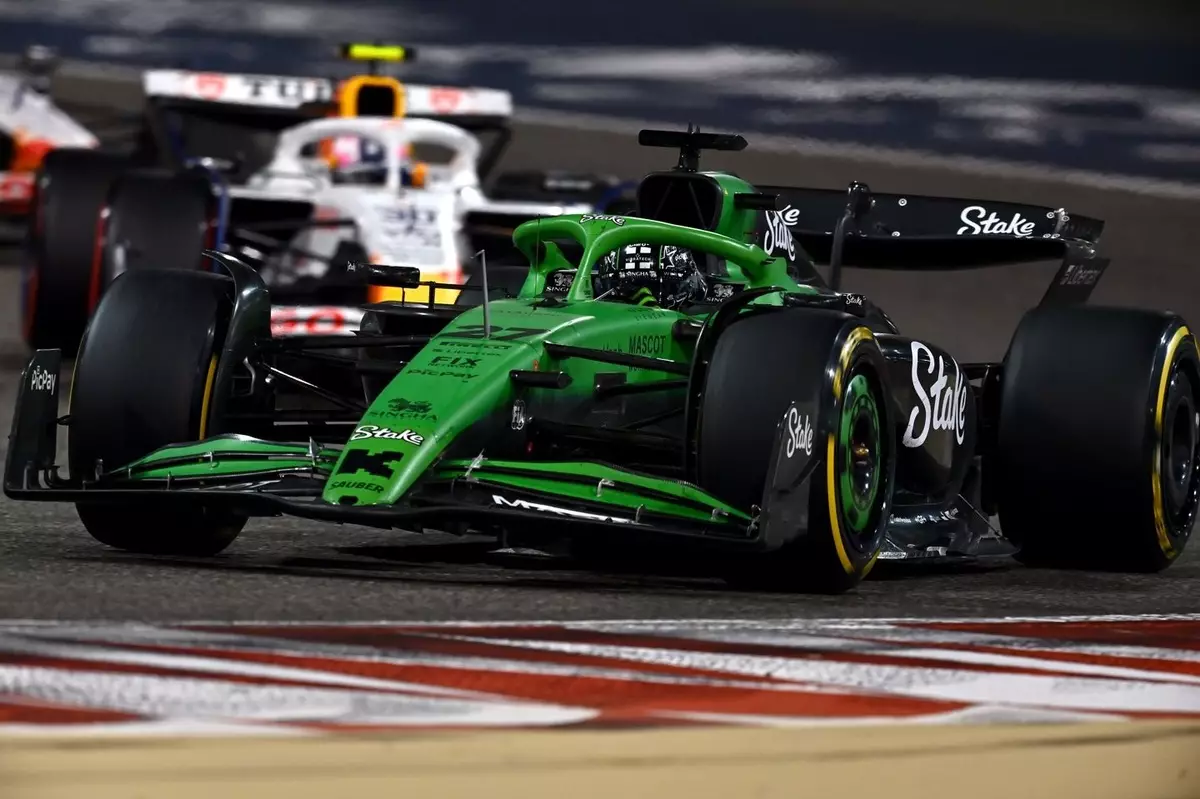Revving Up Challenges: Sauber F1’s Quest for Precision
In the thrilling world of Formula 1 racing, precision is not just a preference—it’s an absolute necessity. The recent disqualification of Nico Hulkenberg from the Bahrain Grand Prix served as a stark reminder of this reality. After a grueling race where Hulkenberg crossed the finish line in 13th place, it was discovered that his car’s skid plank measured just 8.4mm, falling short of the required 9mm. For the Sauber team, this was more than just a disappointment; it was a significant setback in their ongoing quest for competitiveness this season.
This disqualification wasn’t an isolated incident but rather part of a worrying pattern. Not long ago, Lewis Hamilton faced a similar situation with his vehicle in China, raising questions about the reliability and precision of performance measurements in the sport. The fact that these issues have surfaced so early in the season is concerning for teams like Sauber, who are expected to adapt swiftly to stringent regulations.
Key Takeaways
- The importance of precision and adherence to regulations in Formula 1 cannot be overstated.
- Sauber’s recent challenges highlight broader concerns within the sport regarding performance measurement.
- Adaptability to changing conditions is crucial for success in such a competitive environment.
- Strategic decisions must balance performance enhancements with regulatory compliance.
Searching for Answers
Beat Zehnder, a seasoned representative for Sauber, expressed his bewilderment over the situation. During practice sessions, teams go through detailed measurements to ensure compliance, yet somewhere along the line, Hulkenberg’s car fell short. Zehnder speculated that limited participation in FP3 might have contributed to the problem; however, relying solely on this explanation would be insufficient given Formula 1’s standards of accountability.
Mistakes can happen, especially on challenging circuits like Bahrain that wear down car components. Nonetheless, it’s the team’s responsibility to conduct thorough checks and maintenance when points are at stake. This situation indicates a potential lapse in oversight that could have far-reaching consequences for both drivers and the team’s overall credibility.

Setup and Strategy Complications
One intriguing aspect of this situation is how it contrasts with Gabriel Bortoleto’s performance, Hulkenberg’s teammate. The difference in their setups—Hulkenberg opting for more downforce—could explain why their cars reacted differently on track. This highlights the strategic complexities teams face when tailoring their vehicles to specific race conditions.
While Sauber aims to produce cars capable of handling varied configurations, actual racing conditions often complicate these plans. Teams must navigate not only circuit challenges but also adapt to rival teams’ pace and performance changes. It’s a delicate dance of speed and strategy where one misstep can unravel even the most meticulously crafted plans.
The Pursuit of Performance
Sauber’s current struggles underscore a larger narrative within F1 about the relentless pursuit of performance enhancement. Recent race outcomes suggest they lack pace compared to competitors, particularly under harsh conditions like those in Bahrain. Their 2025 car appears to operate within a narrow performance window, making point-scoring even more challenging.
Zehnder pointed out how crucial qualifying is to race success, highlighting the need for better grid positions. The disparity in lap times reflects an acute awareness of how even fractions of seconds are pivotal in this fiercely competitive domain. To improve their prospects, Sauber must identify these crucial tenths quickly or risk continuing difficulties amid “dirty air,” which has become problematic for many teams during closely fought races.

Thus, Sauber’s challenges extend beyond mere performance issues into areas of strategy, preparation, and execution. Are they properly measuring and monitoring their equipment? Do they understand the broader implications of seemingly minor process flaws? Finding answers to these questions could determine their season’s trajectory and potentially shape their future in Formula 1’s intensely competitive arena.
Final Thoughts
The road ahead for Sauber F1 is undoubtedly challenging yet full of possibilities if they can master precision and adaptability. Their journey underscores not only the inherent complexities of racing but also the resilience required to overcome setbacks. By addressing critical aspects like measurement accuracy and strategic planning, they can turn current adversities into stepping stones toward future successes.
As fans and enthusiasts keep an eye on their progress, one thing remains certain: Formula 1 is a world where every millimeter counts and where determination often paves the way for triumphs against all odds.
Formula 1
Sauber F1
Precision Racing
Motorsport Challenges


Leave a Reply